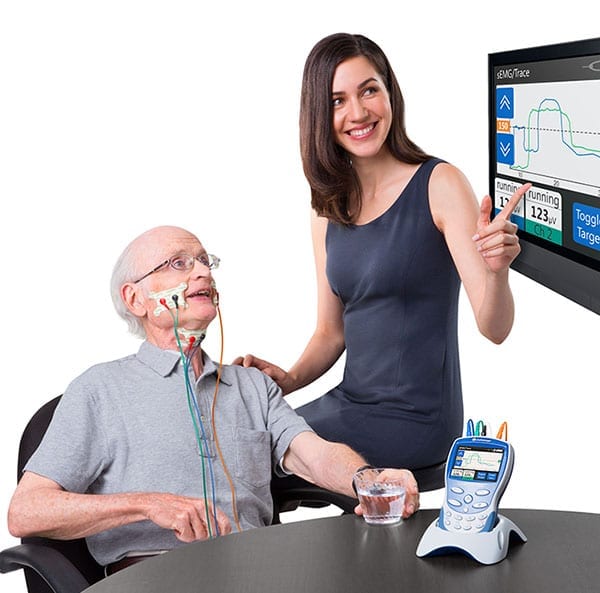
Dysphagia, or difficulty swallowing, affects more people than you may realize. The National Foundation of Swallowing Disorders estimates that one in 25 people of all ages will experience some form of swallowing disorder in their lifetimes, a number that rises to 22% in adults over age 50*. With a greater understanding of the causes of swallowing disorders has come advances in treatment. One of the most promising is VitalStim therapy. Available from Great Lakes Imaging, VitalStim is, to date, the only FDA-cleared medical device for dysphagia treatment.
How VitalStim Therapy Works
VitalStim belongs to a class of physical therapy equipment that relies on neuromuscular electrical stimulation (NMES). The same benefits make NMES useful in sports medicine, physical therapy, and even alongside chiropractic equipment. The ability to help regenerate and maintain muscle tissue, and a precise degree of targeted electrical stimulus, makes VitalStim a particularly effective dysphagia treatment.
The central nervous system already uses electrical impulses to initiate voluntary and involuntary muscle activity. In all its forms, NMES can either mimic, supplement, or even take the place of those signals. In VitalStim, those impulses help to build strength, allowing in turn for the kinds of muscle training and restoration of muscle memory that can improve or restore function for those suffering from dysphagia. With the ability to deliver electrical stimulation on as many as four channels simultaneously, and available settings for sequencing, duration, and frequency (helped along by sEMG biofeedback), VitalStim treatment is easy to customize. And with BlueTooth connectivity, custom software, and an extensive knowledge base, it’s even easier for treatment to evolve with the patient’s condition.
Causes of Dysphagia
Swallowing is a three-part process. In the first (oral) phase, chewing manipulates food. In the second (pharyngeal) phase, muscles divert the swallowed liquid or semi-solid toward the esophagus and away from the trachea. In the final, or esophageal, phase, what is swallowed is guided along the esophagus to the stomach.
Dysphagia is an interruption, via partial or full paralysis, of one or more parts of that process. Symptoms may range from mild discomfort when swallowing to a full paralysis wherein swallowing is impossible. Underlying causes are equally varied, with some dysphagia being temporary (as is common after the use of a breathing tube) or having varying degrees of severity due to surgical side effects, stroke and traumatic brain injury, or degenerative disorders like ALS or Parkinson’s.
VitalStim Compared to Other Dysphagia Treatments
VitalStim treatment is generally a complement to other dysphagia treatments rather than a replacement. The restoration of muscle tone and function is a gradual process, with treatment determined in no small part by goals, treatment outcomes, and individual patients’ underlying pathologies. For this reason, NMES is best viewed in the context of a broader treatment plan drawn up by an SLP and implemented by the patient’s general practitioner, and specialists like a neurologist and the physical therapist who is responsible for administering VitalStim therapy.
VitalStim NMES Equipment in the Detroit Area
As with any treatment, the more tools a practice has at its disposal, the more treatment options it can offer its patients — and the better its chances of improving treatment outcomes. For more information on VitalStim, get in touch with Great Lakes Imaging for help tailoring this and other medical equipment to your practice.
*National Foundation for Swallowing Disorders, Deciphering Dysphagia
